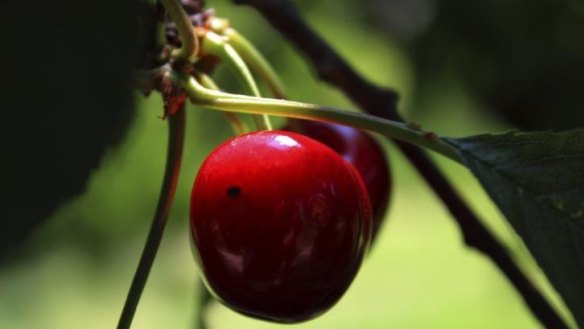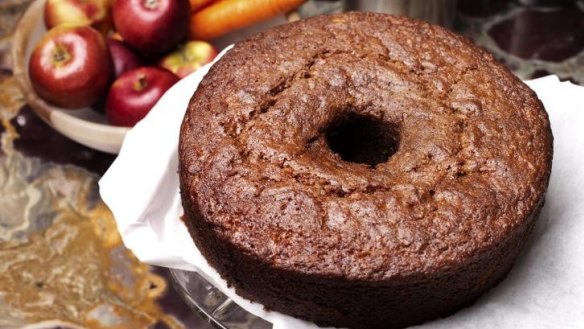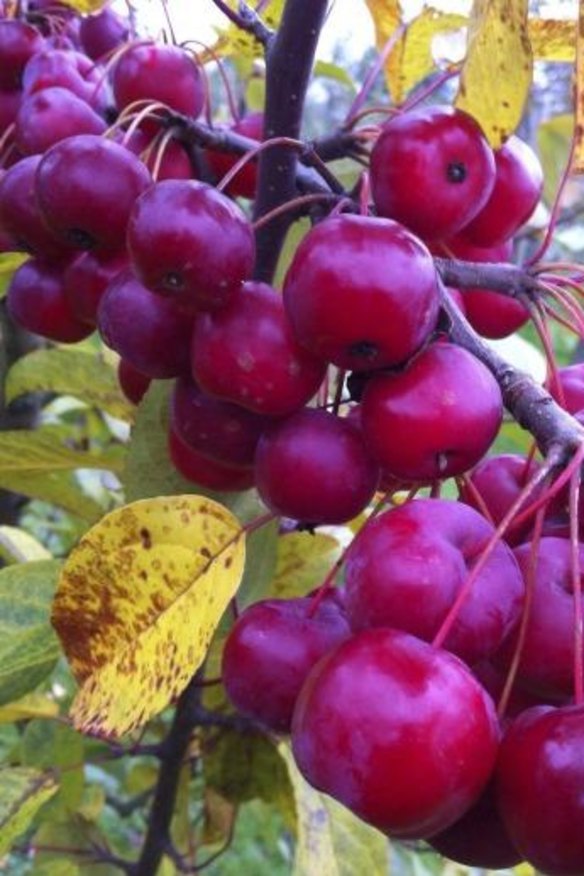Owen Pidgeon's selection of fruit trees for Canberra region gardens

From the many cultivars of the various fruit trees that can grow in the southern climates of Australia, it can be challenging selecting just a few for the home garden. What are the essential elements in choosing from the available apples, when you know that there are over 7000 distinct cultivars growing across the globe. With pears, there are close to 5000 named cultivars to be found in the world. The numbers of quinces, apricots, plums and cherries are fewer but there is still great variety.
Selecting for the backyard will usually mean just a few trees so the decision needs to consider uses for the fruit, flavour, the degree of difficulty in caring for the trees and any need for cross pollination. If you have space along the back fence or beside the driveway you can have more diversity by planting a close hedgerow or espalier the trees.
Apples, pears and cherries need cross pollination so you will need to choose more than one, and choose cultivars that will flower at the same time. The selections below all flower in the mid-range time, so they will help each other with cross pollination.

Apples
Early-season apples generally have very short keeping times. However, some are good value and will give a reliable supply in early February. Abas is a reliable, early-season, crisp red apple originally from Victoria. Akane is another good selection for fresh eating, grown first in Japan. Again, it is for the fresh eating market but will store reasonably well. James Grieve is one of the few apples grown originally in Scotland. It is sweet and juicy when ripe but can be used for cooking when a little unripe.
If you have space for a mid-season apple (maturing in March), consider the Bonza, Spartan and Snowy apples. The Bonza is a real beauty, originating just down the road in Batlow with one parent being the Jonathan apple. It is a disease-resistant variety, has remarkably white, juicy flesh and it will hang on the tree for weeks. Great for eating fresh or for turning into apple sauce or dried apple. Spartan comes from Canada and is wonderful to eat fresh off the tree. The little Snowy has such white flesh and is of a size that children just adore in their lunchboxes.
Golden Delicious is another excellent mid-season apple, underrated because it is often picked unripe. It is one of the most widely grown apples across the globe. Many orchards in France specialise in growing it for the wider European market. When mature and freshly picked off the tree, the golden skin colour tells of the sweet, crisp juicy apple flesh concealed. It can be used in cooking as it keeps its shape and it stores well.

For those who wish to eat and cook with tart apples seek out a Belle de Boskoop which hails from the Netherlands. It keeps its shape when making pies. It is one of the reinette family of apples. The Orleans Reinette and Reinette du Canada are two historic French varieties with excellent flavour for late-season apples.
Democrat is a great late-season apple from Tasmania with quite dark skin, crips flesh and it is a good keeper. Splendour is another wonderful late-season apple, coming out of New Zealand.
Pears
The red Sensation is a good choice for the home garden, producing an early pear with fantastic flavour. As with other red sports of fruits, Sensation was first found on a branch of the main variety, this time the Williams pear tree in the Mock's orchards in Victoria.
In March you can select from several cultivars. The Beurre Hardy which originated in the famous pear growing region of Anjou in France has a very fine, smooth taste. The pear bears a regular, heavy crop of pears with orangy brown skin. The Rouge d'Anjou will ripen a little later. It is my favourite with its beautiful smooth taste and purple skin. It is a very good keeper.
Late-season pears are good for the winter months. The Winter Nelis is a squat round pear from Belgium with sweet juicy flesh. Winter Cole is a seedling off this cultivar, raised in Victoria in 1880.
Quinces
Mid-autumn can see you harvesting a wonderful fruit in quinces. Around 20 varieties are now available in Australia. I will mention just four of distinction.
Smyrna is the best known. Originally from Turkey, it produces large, opera-shaped fruit, is very aromatic and remains firm when cooked. We have several growing in our orchard.
Powells Prize is fine, Australian variety ripening early in the season, in late March. The fruit is smaller than some but it cooks to a beautiful pink. Fullers is a large quince which was bred in New Jersey, US in 1860. It is a very yellow fleshed variety with no grit but when cooked the final product is pale pink in colour. De Bourgeaut is an excellent French variety, large in size, cooking to a deep pink. It has excellent flavour and matures in late April.
Apricots
If you want to take the risk of losing the crop sometimes to early heavy frosts, consider planting out two or three apricots. Apricots are much more delicious if grown in the home garden and allowed to ripen on the tree.
Moorpark is one of the very reliable, old-time favourites with intense flavour. It has a long history, dating back to 1668, being raised in England. If you can try to also plant out either a Goldrich or Rival apricot which were both bred in North America to produce bountiful crops of fine, large fruit. Trevatt is another good, late season variety from Mildura. It yields good crops of juicy, sweet golden apricots.
Plums
Most plums will ripen in February or into March, so you can enjoy a late-summer harvest. The classic purple European plum is the Angelina with its rich flavour when eaten off the tree. It is a good plum for cooking too. Wickson is a good, yellow-fleshed, mid-season plum for fresh eating. Santa Rosa is an excellent red-fleshed Japanese plum which is self fertile. We also grow Satsuma plums with their deep purple flesh, for bottling.
Cherries
To consider growing cherry trees, you will need to plan for annual netting days, or else you will just be growing the fruit for visiting birds. The cherry also needs excellent drainage so that limits many in the Canberra region. As most cultivars need quite specific neighbours for pollination, a minimum of three varieties is generally needed. We have good yields early with Burgsdorf, mid season with Bing and Van, and late season with Lapins. Stella is a mid-season cherry from Canada with fine flavour; it is one of the few that are self fertile. Lapins is a good late-season cherry. A cross of Stella and Van, it is also self fertile. You can also consider planting a sour Morello cherry, another self fertile variety.
Moist apple and carrot cake
2 apples (preferably golden delicious)
1 cup plain flour
2 tsp bicarb soda
1 tsp cinnamon
½ cup brown sugar
½ cup raw sugar
½ cup vegetable oil
2 large free-range eggs
1 tsp vanilla essence
1½ cups grated carrot
½ cup sultanas
Preheat the oven to 180°C. Grease and line a small loaf tin. Peel, core and slice the apples and stew until soft. Sift the flour with the bicarb soda and cinnamon. Mix in the brown and raw sugars then stir in the vegetable oil. Lightly beat the eggs, add the vanilla and stir into the mixture. Add in the grated carrot, sultanas and sliced apple. Bake for 50 minutes.
This week in the garden
* Plant out well established onion and leek seedlings. Plant more main-season onion seeds in a propagation tray.
* If you have citrus ripening now, harvest from the outer sections of the tree first. Use a pair of secateurs to detach with stem intact, so the fruit will keep longer.
* Prepare raised rows for planting out strawberry runners. Dig in plenty of compost to feed the plants over the coming summer. Allow about 15 cms between plants.
* Consider planting out a row of raspberries or brambleberries along your back fence. This will allow you to more easily set up a trellis to support the canes as they do grow vigorously.
Owen Pidgeon runs the Loriendale Organic Orchard near Hall.
Restaurant reviews, news and the hottest openings served to your inbox.
Sign up